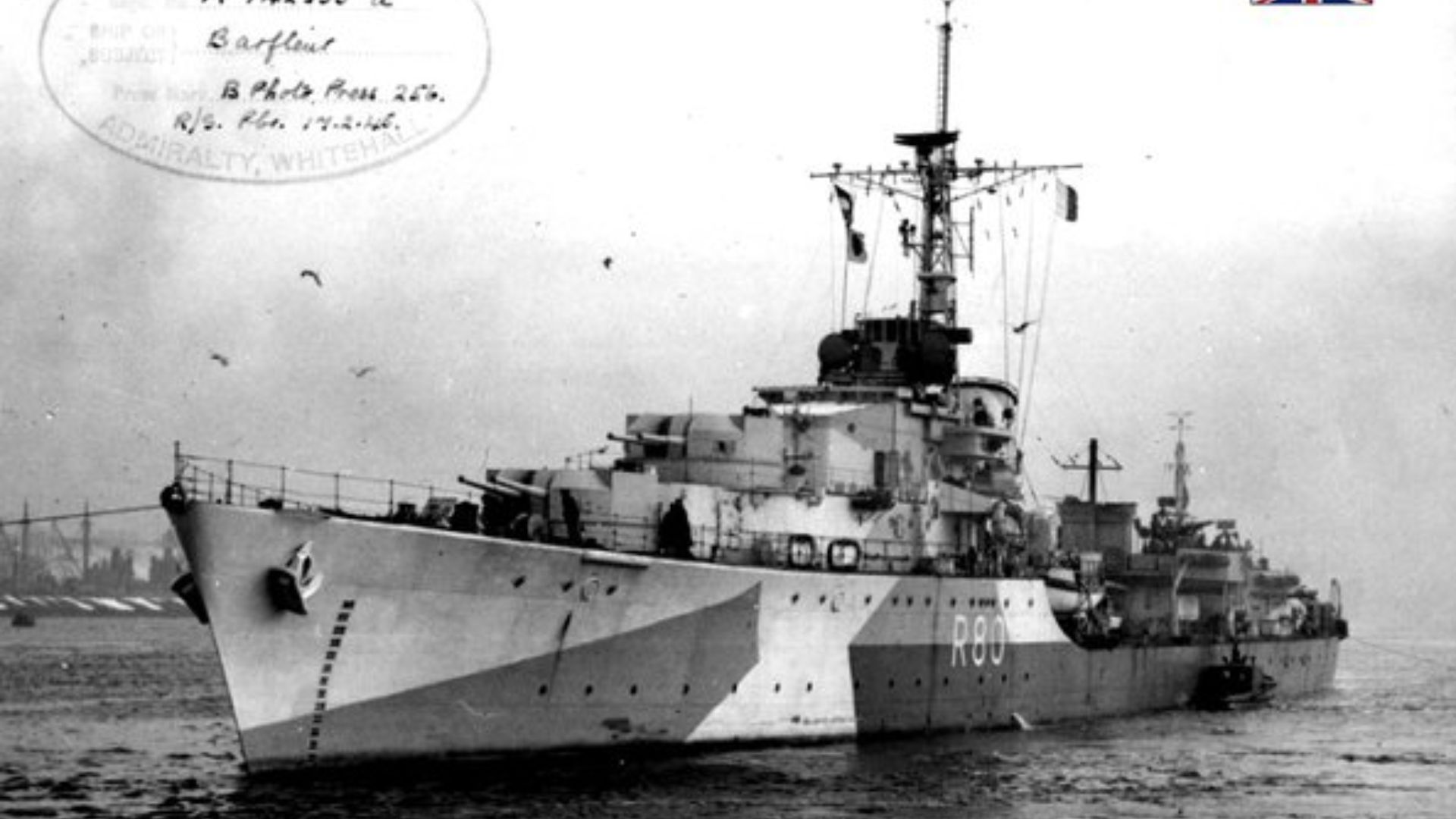
The Royal Navy designed the excellent Battle class destroyers to have high effectiveness in combating anti-aircraft, which required dual role 114mm cannons, 40mm cannons, and anti-aircraft fire control systems, as well as sophisticated equipment, fire control, and one hull large and stable.
General lines
The project was born in 1941, when the British were alarmed by the lack of air defense destroyer ships, as the leading artillery was limited to 40 or 55 degrees of elevation, with insufficient air defense, especially against dive bombers.
Given that there were ways to increase the firepower of flak if not making the main battery, were established as criteria of the guns with 85 degrees of elevation, and the gauge dropped to 114mm, pretty much the same type armament of the aircraft carrier and some types of British cruisers.
All the guns, not without misgivings, were expected to bow in 2 towers above the other. A cannon was installed at the stern to turn, but it was only 102mm, suitable for shooting pretty much just enlightening.
The project, to provide independence and stability for firing anti-aircraft, evolved into a big ship, much more extensive than before, with almost too little army for its displacement, but also possessed impact binned 40mm aft, in tandem, the superstructures. 8 torpedoes were expected to be able to maintain a good ability contrive.
The subclass 1942
Of this subclass were built 16 units; these Barfleur, Armada, Trafalgar, Camperdown, Hogue, and Lagos were armed with a cannon back by 4 inches, while the latter mounted in its place two complexes single Bofors 40/60 mm Mk VII, each with eight reeds. Subsequently, these complexes were also mounted on the first unit of the class.
The subclass 1943
Eight units were built: Barfleur, Armada, Trafalgar, Hogue, Lagos, Camperdown, Solebay and Finisterre. Mk 37 fire control units of the U.S. were installed later in operational service, which saw the Type 1943 improve compared to the first model, the Type 1942.
These new ships also had a cannon of 114 mm instead of the 102 aft of the initial models. At the end of the war, the 24 fighters ordered 40 of these two flotillas, all for the Royal Navy. The other hulls, hull lengthened except for two specimens that were completed as part of the Daring class, were scrapped.
The subclass or 1944 Australian Battle
No hull of the third fleet was built for the Royal Navy. Two hulls were completed for the Royal Australian Navy, the HMAS Anzac and HMAS Tobruk, in England at the Cockatoo Yard, Sydney. These ships were distinguished from the other, similar to a different terminal of the funnel, and were completed respectively in 1950 and 1951.